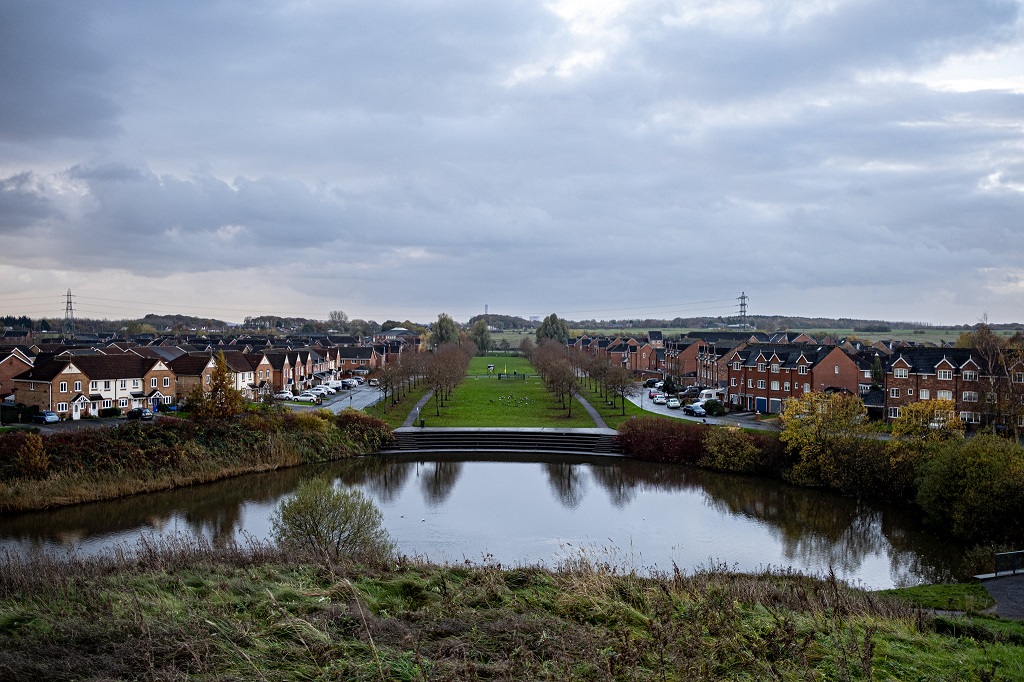The Subplot
The Subplot | Planning policy special
Welcome to The Subplot, your regular slice of commentary on the business and property market from across the North of England and North Wales.
THIS WEEK
- Unblocking the system: the government’s plans to improve capacity in the planning system win cautious praise
- Elevator pitch: your weekly rundown of who and what is going up, and who is heading the other way
PLANNING FOR TROUBLE
This week’s planning tweaks could be significant
Small but welcome changes could improve capacity in the planning system. But keep your fingers crossed.
Levelling up, housing, and communities secretary Michael Gove chose this week to make a series of announcements about property and economic growth. Some of them were risible – the idea that there are thousands of former chip shops ready, waiting, and perfect for residential conversion is for the birds. As Knight Frank quickly pointed out, even if the latest tweak to permitted development rights worked to its fullest, it can’t deliver more than a few hundred new homes when hundreds of thousands are what’s needed.
This way, please
So let’s forget the cold vegetables and turn to the red meat. This was about capacity in a planning system widely believed to be an overloaded, understaffed, public service that has reached, or exceeded, its ability to cope. On Tuesday, three documents appeared. The first was a response to a consultation on increasing planning fees, thus helping to pay for more planners. The second was on a second round of funding to help councils afford to deal with the largest nationally significant planning applications (“nationally significant” is a broader category than you might think). The third was a consultation on how big projects are assessed and approved. You have until September to respond.
Follow the money
The gist is: planning application fees go up by 35% for major applications and by 25% for householders. This still doesn’t cover the cost of handling an application.
Meanwhile, local authority resources have been falling steadily since 2015/2016, according to impartial House of Commons Library data. Council expenditure on planning fell by an average of 43% from 2009/2010 to 2020/2021, according to the Royal Town Planning Institute, but it was worse in the North.
The North East saw funding drop by 62%, Yorkshire by 49%, and the North West by 46%. So can we assume councils will still struggle to make up the difference? The government concludes “it is expected that the performance of local planning authorities will improve”.
Special pot
Maybe the gap can be plugged with grants from the second round of the funding to support nationally significant projects with their biodiversity and net zero carbon analysis? Councils are invited to apply to the Innovation and Capacity Fund for up to £100,000 each, or £350,000 if transport infrastructure is involved.
Fees rethink
Proposals to streamline the way nationally significant infrastructure applications are handled are mostly tinkering. Here, too, the exception is fee changes. Today, the Planning Inspectorate can only recover about 70% of its costs through fees. Changes involve allowing the inspectorate to charge closer to cost for pre-application advice and recalibrating the fees to match the work involved rather than (madly) the size of the local authority in whose area the scheme sits.
It’s a people problem
Will this make much difference? Not if it doesn’t tackle recruitment, says Public Practice, a social enterprise that helps local councils find the placemaking specialists they need but struggle to recruit. Almost 80% of local councils say they can’t get the staff these days.
“Through the wide amount of evidence-based research and the daily conversations we have with officers, we know there is a recruitment and capacity crisis affecting planning and placemaking departments across England,” says chief executive Pooja Agrawal.
The government’s capacity-growing proposals will help to an extent: it has put up £1.6m to fund a council-run scheme, Pathways to Planning, to recruit 150 graduates for local authority planning departments by 2025. The project launches in the autumn.
Let’s take a look
For a taste of early reactions to Tuesday’s announcements, take a trip to St Helens. The borough has a recently adopted and strongly pro-growth local plan involving Green Belt release and includes Marcol iSec’s 3m sq ft Strategic Rail Freight Interchange on a 300-acre site next to Junction 22 of the M6 (it is a nationally significant infrastructure project).
Can’t get the staff
St Helens head of planning, Kieran Birch, says recruitment is an issue, particularly for some specialisms like design and masterplanning. “We recently advertised a senior officer post and didn’t get any applicants we wanted to interview,” he tells Subplot. The temporary solution is to employ contractors, but that isn’t ideal. “We have some big sites and we want our own staff on them getting experience, upskilling – not a contractor,” he says.
But £££
The increase in planning fees could be good for St Helens, judging by the council’s analysis of potential income if the new fees had been chargeable over the past five years. “If it’s ring-fenced, and we use it correctly, we should be able to recruit permanently, and we will absolutely use the graduate Pathways to Planning scheme -fee income could fund permanent posts from that,” says Birch.
The £100,000 (or £350,000) grant for nationally significant schemes is interesting – but depends on how flexible it is. “It hinges on what we can use the money for,” says Birch.
The overall conclusion from St Helens is that the latest package is helpful – but in the end more money is the only answer. “Increasing fees helps now, the graduate scheme helps – these will both make a difference,” says Birch. “I think we’ve got a good record on performance, but I expect developers would be happy to pay higher fees if they get permission fast.”
What comes next? Some of the smartest names in planning have been discussing this with Place North. Watch a video of the roundtable discussion sponsored by Lexington.
 ELEVATOR PITCH
ELEVATOR PITCH
Going up, or going down? This week’s movers
This week, some old favourites are wheeled out for a little ride. The doors are opening for Green Belt development and coastal communities regeneration. Will they go up or down?
 Good brownfield, bad Green Belt
Good brownfield, bad Green Belt
Here we go again. Green Belt versus brownfield development is back in the headlines. Both major parties gave it an outing in recent days.
In a speech, housing secretary Michael Gove spoke of his plans for growth in 20 urban locations. “That is why we will enable brownfield development rather than Green Belt erosion, sustainable growth rather than suburban sprawl,” he said.
His Labour opposite number, Lisa Nandy, tried a variation on the theme by dividing Green Belt up into good and bad. She said she wanted “poor-quality” Green Belt land handed to new mayoral development corporations.
The Sunday Telegraph reported her saying Labour would “declassify the poor-quality parts, which currently aren’t very lucrative for developers but provide good sites for new housing.” This begs the question, why would housing be good on sites other developers think are unsuitable given every site needs pretty much the same things – power, access, drainage? Please feel free to add your thoughts below the line.
Whether you call it brownfield or bad Green Belt, the big issue neither mention is the problem of servicing the land – particularly providing electricity.
“We have several sites in the North West which benefit from planning consent and are development-ready,” says Jayne Hennessy, of Peel Natural Resources and Energy, part of Peel L&P.
“However, grid constraints and new points of connection remain a major issue in the delivery of these projects,” Hennessy continues. “Sites are being stalled due to distribution network operator’s requirements for network reinforcement costs to be borne by the developer, which typically run into the millions of pounds and can take up to five years, delaying the economic benefits of these sites being brought forward.”
 Seaside town revival
Seaside town revival
Here we go again, again. This time it’s the seaside towns of the Lancashire, Cumbria, and Yorkshire and Durham/Northumberland coast and their quest for a viable future. Labour’s shadow chancellor Rachel Reeves appeared yesterday in a Sun splash, sitting in a café in Scarborough vowing to revive Britain’s coastal towns by changing business rates, cracking down on second homes, and boosting tourism. Great news, but maybe Reeves would like to take a quick glance at an analysis of lessons from the existing government’s £229m Coastal Communities Fund, published a few weeks ago. It is illuminating. Since 2012, the fund has backed 178 projects in England, the last £50m tranche in 2018 awarding £1.7m to Blackpool, £1m to Copeland, £1.3m to the County Durham Coast, £3.6m to Hoylake, and £2.5m to Whitehaven, among others.
The analysis is not happy reading: they treated every project – big or small – the same, Whitehall interfered too much, they didn’t think enough about how many people would benefit or how deprived an area was, they preferred to support new projects than existing ones which might limit impact, they didn’t define outcomes well or check money was being well spent, and the jobs and tourism figures are a bit iffy.
Thus: total extra tourism spend was estimated at £227m, which is spookily close to total funding, and on jobs – “projects not reporting any actual indirect job creation accounted for a further 5,730 forecast jobs” – which casts doubt on the forecasts, to say the least. The report suggests, charitably, that some of those jobs may have existed somehow but “lack of systematic evaluation” makes it hard to judge what really happened and the report concludes that if anyone does this again they “should consider ways to better support and assist projects, particularly small projects, to estimate their actual economic impact.”
Get in touch with David Thame: david.thame@placenorth.co.uk





Is it not true each authority has it’s own interpretation of planning consents, depending on local plans, political and public pressure. The main idea is create more domestic property capacity and this is an easy remedy, allow homeowners to expand their homes in a considerate way to others and without the often long process of planning, whereby people can give up and want to buy bigger or new.
Most people move for a reason, but would prefer to stay put, especially for schools and retail
So maybe a more flexible approach from inspectors and allowing such rules as ” in line sight” plans to be revised?
By Just saying
Developers love attractive, verdant, up-market sites because any new development will command premium prices, simply by virtue of its location, thereby absolving them of the need to make any effort to build quality houses. Less attractive sites, by contrast, oblige the developer to sell the houses on their individual merits, something which the major housebuilders find much harder to do.
By Matthew Jones
@July 27, 2023 at 11:14 am
By Just saying
Good piece – and there’s news on this front. In the Levelling Up & Regeneration Bill, due to become law this autumn, there’s legislation within for ‘Street Votes’, which hands individual streets powers for referenda on street design and respectful extensions to existing dwellings.
By SW
Just Saying and SW – better enabling extensions so people can stay put is addressing a tiny element of the problem. The far, far, far bigger issue is the abject shortage of affordable homes, in most areas for families. History strongly suggests that this will only be remedied by a (significant) programme of social house building. A second issue is the limited options available for the many homeowners wishing to downsize but, ideally, stay within their existing community (thus freeing up (probably not affordable) family housing) – that also won’t be remedied by allowing homeowners to extend their properties, indeed, allowing smaller properties to be more readily extended will reduce the stock of properties available for downsizing.
By the light of the moon
@light of the moon
Fair points. ‘Street Votes’ are just one part of the solution, not a panacea in themselves. A mix of solutions are what is called for – and I agree on a big programme of council house building, as well as suitable properties for downsizing. I think far more modern almshouses should be built – and not just for the elderly. There’s now almshouses for young people – and such a set up could be a great remedy for keeping local young people in the areas they grew up in, whether the Lake District or Manchester.
By SW